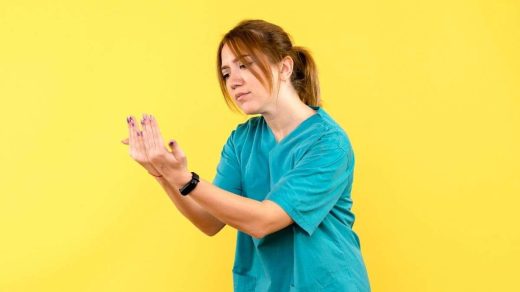
For those with Parkinson’s disease, low-cost, wearable sensors could improve care access, a new study finds.
To have their symptoms monitored, such patients must periodically undergo assessment to have their symptoms monitored. This is typically a time-consuming, in-person visit to a specialist with limited availability, said study leader Manuel Enrique Hernandez, a professor of biomedical and translational sciences at the University of Illinois.
“This study demonstrates that the expansion of datasets with healthy older adult motion data and integration with deep learning approaches can help improve the accuracy of detecting differences in motor impairment in persons with Parkinson’s disease for use in future telemedicine sessions,” he said.
Telemedicine can help improve patient care and accessibility. But the absence of measurable metrics creates hurdles. For instance, assessing muscle tone or rigidity may be problematic.
While wearable sensors show promise for evaluating motor skills, cost considerations can limit their use. To address these challenges, investigators focused on ways to improve assessment using low-cost wearable sensors.
“Ideally, we’d have something that’s completely passive, gathering data as a person goes through their everyday environment and using that information to provide guidance on their overall motor function and progression of neurological symptoms. But then you face the big challenge of how to parse all that information and make it useful to a clinician,” Hernandez said. “That’s what led to our strategy of improving the machine learning, honing in on activities useful for assessment and looking at healthy individuals as a baseline.”
The researchers adapted the Movement Disorders Society-sponsored revision of the Unified Parkinson’s Disease Rating Scale, which is considered the gold standard in clinical assessment. This scale outlines specific tasks that a patient would perform and qualitative observations a caregiver would make during an exam and organizes them into categories for scoring.
For their study, the researchers had patients perform tasks and muscle movements while wearing sensors to provide the data in the categories scored by MDS-UPDRS. They used data from both patients with Parkinson’s disease and from healthy older adults to train their machine learning model.
The researchers plan to expand their model in collaboration with neurologists and clinicians. They hope to identify a few additional tasks that can quantitatively measure more about Parkinson’s disease symptoms, like tremor. They also aim to keep sensor costs low and usage simple.
Full findings appear in the journal Sensors.
This was shown first on: https://www.mcknightsseniorliving.com/home/news/tech-daily-news/low-cost-wearable-sensors-may-lead-to-better-parkinsons-care/



